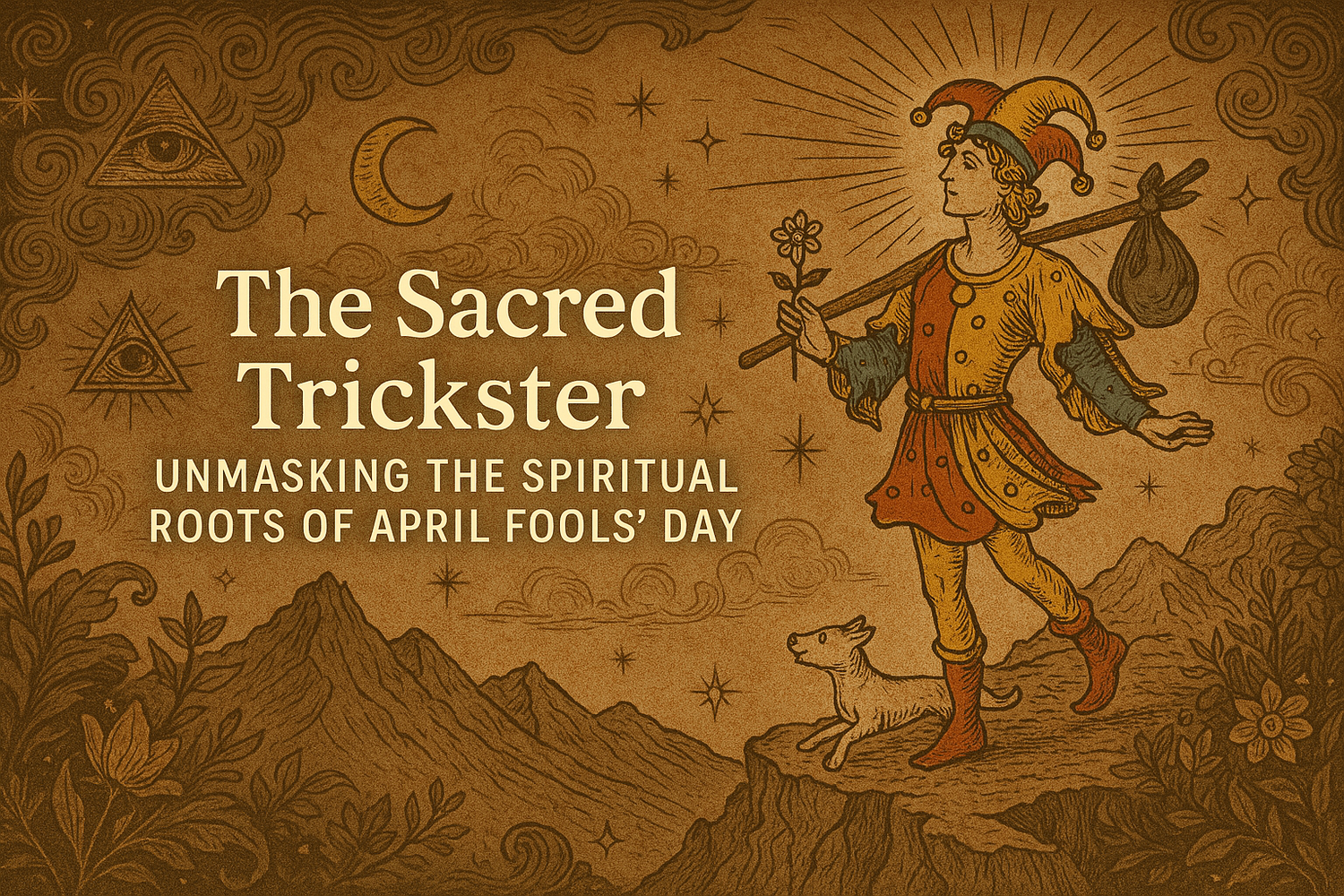Beyond the Pranks
Every year on April 1st, pranksters emerge from the shadows, delighting in jokes and harmless mischief. But behind the whoopee cushions and switched salt shakers lies a deeper, often forgotten truth: April Fools' Day may be rooted in ancient spirituality, where chaos was not just welcomed—but celebrated.
At the heart of this mystical thread is the Sacred Trickster—an archetype found across cultures and centuries. Far more than a jester, this being was a powerful spiritual force, both feared and revered. To understand the true nature of April Fools, we must first meet the trickster face-to-face.
The Fool as a Sacred Archetype
The Fool is one of the oldest and most misunderstood figures in human history. Appearing in mythology, folklore, and mysticism, the fool embodies paradox: innocence and wisdom, chaos and creation, laughter and truth. Unlike a mere clown, the sacred fool walks the line between worlds—material and spiritual, real and imagined.
In the Tarot, the Fool is Card 0, the number of infinite potential. They step off the cliff with childlike faith, unaware of what awaits. But that’s the secret: the Fool knows what others don’t—life is a game, and only by playing can we learn who we truly are.
The sacred fool has long been a disruptor of the status quo, a revealer of hidden truths. Court jesters, for instance, were often the only ones allowed to criticize monarchs without punishment. Their power lay not in their foolishness—but in their ability to speak freely while everyone else was bound by rules.
Ancient Festivals of Chaos and Light
Long before April Fools became a calendar quirk, ancient civilizations celebrated spring with wild, chaotic festivals that shared striking similarities.
✧ Hilaria (Rome)
The Romans celebrated Hilaria around the spring equinox to honor the resurrection of the god Attis and the mother goddess Cybele. People wore disguises, mocked the nobility, and reversed social roles. Joy, laughter, and satire were all considered acts of spiritual reverence—echoing themes we now see in April Fools’ antics.
✧ Holi (India)
Holi, the Hindu Festival of Colors, also celebrates chaos, color, and divine mischief. Associated with the prank-loving god Krishna, Holi is a time when norms are cast aside. Through color fights, music, and laughter, the soul is cleansed and renewed—just as the earth awakens from winter’s slumber.
✧ Ostara (Pagan Europe)
The Pagan sabbat of Ostara, tied to the spring equinox, celebrates balance, fertility, and rebirth. Trickster spirits were said to roam freely as the veils between worlds grew thin. This was a time when animals spoke, fairies danced, and reality twisted—again, not unlike the surreal nature of April Fools' Day.
The Trickster Across Cultures
The Fool or Trickster is not exclusive to one tradition—it is universal. This character appears in nearly every mythology as a bringer of change, transformation, and sometimes destruction.
-
Loki (Norse Mythology): A shapeshifter and mischief-maker whose tricks often led to unintended consequences—both humorous and catastrophic.
-
Hermes (Greek Mythology): God of thieves, travelers, and communication, Hermes played tricks even on the gods but also acted as a guide for souls.
-
Coyote (Native American Traditions): Both a hero and a villain, Coyote teaches through mistakes, jokes, and confusion.
-
Anansi (African Folklore): A spider-god who uses his wits to outsmart the powerful, often exposing their greed and pride.
Each of these figures shares one common trait: disruption. They break rules to reveal truth. They upset order to initiate growth.
April Fools as a Portal to the Unknown
So, how does this relate to April 1st?
April marks the true energetic new year in many spiritual systems. The astrological new year begins in Aries—the bold, impulsive fire sign that charges ahead without fear. It's the sign of pioneers, warriors, and yes… fools.
April Fools' Day, placed right at the gateway of this cosmic shift, acts as a liminal space—a brief window when reality bends, when mischief is allowed, when laughter becomes a spiritual act. Like Samhain opens the door to the dead, April 1st opens the door to the unexpected.
In spiritual terms, laughter is not a distraction from the divine—it is divine. It shakes the ego, opens the heart, and lifts the veil. The trickster doesn’t exist to make us feel foolish… but to remind us we are.
And that’s okay.
Embracing the Trickster Within
Many mystics believe the universe itself has a trickster soul. Ever tried to manifest something, only to get exactly what you asked for—but not how you imagined? That’s the sacred trickster at work.
To honor the energy of April Fools:
-
Play with intention. Use humor and joy as a form of manifestation.
-
Question everything. Let your inner fool challenge what you “know.”
-
Trust the unknown. Like the Fool in Tarot, take that step into the mystery.
-
Laugh often. Laughter heals, releases, and uplifts. It is spiritual alchemy.
The Fool is a Key, Not a Joke
April Fools’ Day is more than a prankster's playground—it’s a remnant of a time when chaos was sacred, laughter was healing, and the Fool was a guide through the spiritual unknown.
As you move through this whimsical day, consider this: What if the joke isn’t on you… but for you?



